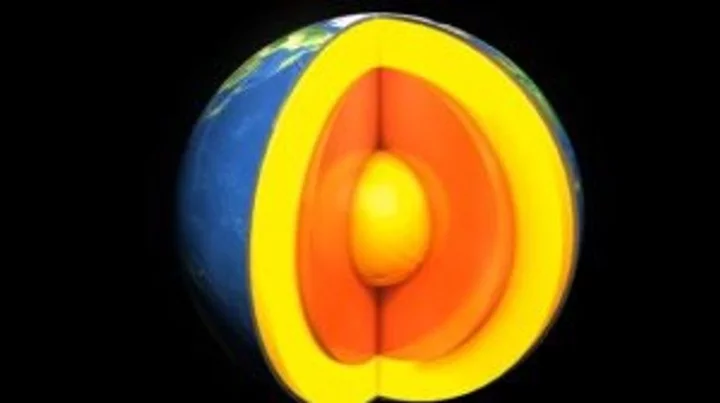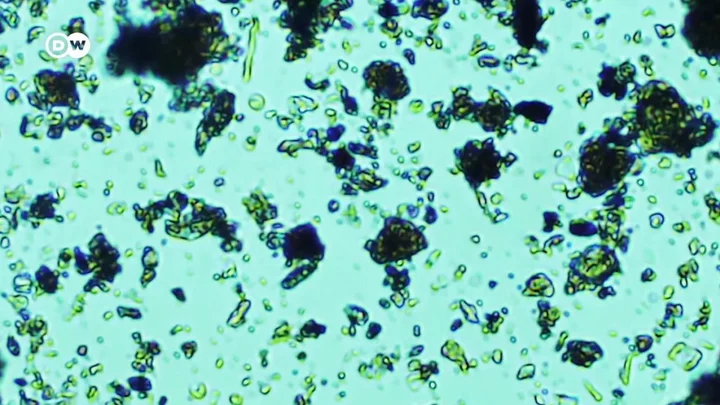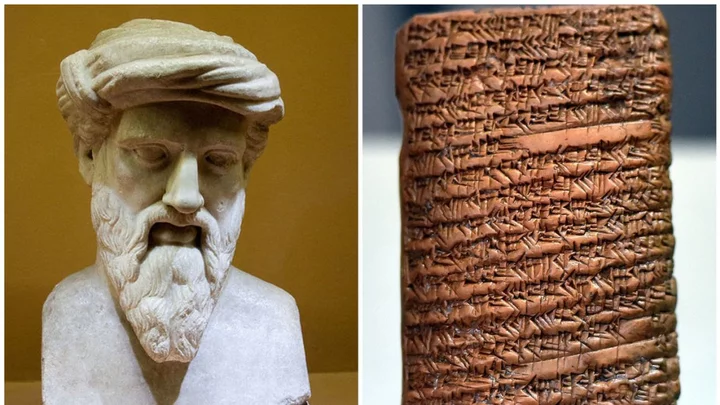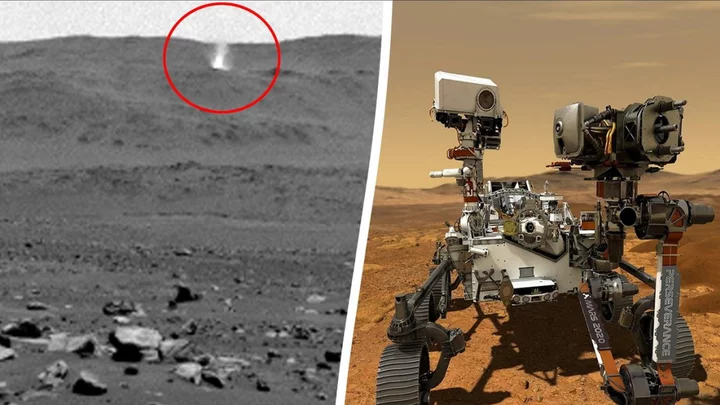
Scientists make creepy discovery about ancient cannibal rituals
A stark new discovery has revealed that cannibalism was a common practice in Europe to commemorate the dead 15,000 years ago. Research from London’s Natural History Museum (NHM) found human remains at a famed Paleolithic site in Cheddar Gorge that appeared to have bite marks across 100 of the bones. Scientists believe this is sufficient evidence of cannibalism in the Magdalenian group. "We interpret the archaeological evidence that cannibalism was practised on multiple occasions across northwest Europe over a short period of time as an indication that such behaviour was part of a funerary behaviour among Magdalenian groups, and not simply practised out of necessity," Dr Silvia Bello, paleoanthropologist and principal researcher said in a statement. Postdoctoral researcher William Marsh went on to say that the study contextualised the area by reviewing all sites "attributed to the Magdalenian culture." "During the terminal time period of the Palaeolithic, you actually see a turnover in both genetic ancestry and funerary behaviour, indicative of population replacement as Epigravettian groups migrated northwards," he said, as per IFL Science. "We believe that the change in funerary behaviour identified here is an example of demic diffusion where essentially one population comes in and replaces another population and that brings about a change in behaviour." Fast forward to 2023, and now people are having their bodies frozen in hopes they can "wake up" in the future. Cryonics "is the practice of preserving humans and animals at cryogenic temperatures in the hope that future science can restore them to a healthy living condition as well as rejuvenate them," according to the National Library of Medicine. "At present cryonics can only be performed after pronouncement of legal death of the cryonics subject." Sign up for our free Indy100 weekly newsletter Have your say in our news democracy. Click the upvote icon at the top of the page to help raise this article through the indy100 rankings.
2023-10-05 21:18

Scientists shed surprising new light on the Earth's 'butter-like' inner core
For centuries we’ve been told that the Moon is made of cheese but now, it turns out, the Earth is more like butter. Or, at least, its inner core is. A new study led by experts at the University of Texas (UT) and collaborators in China found that iron atoms at the very centre of our world move around much more than previously thought, and the implications could be huge. Scientists have long sought to dissect the insides of our planet but it isn’t easy, given that we have no way of directly exploring its core. The deepest hole humans have ever dug – branded the "entrance to hell" – extended an impressive 12,263m (40,230ft) down, but even that doesn’t come close to breaking through the crust to the layers beneath. Still, thanks to techniques like seismic tomography – which analyses how waves of energy travel through different materials during earthquakes – we’ve been able to map out the world’s interior. Now, researchers have used lab experiments and AI algorithms to shed a striking new light on the heart of the planet. "Seismologists have found that the centre of the Earth, called the inner core, is surprisingly soft, kind of like how butter is soft in your kitchen," Youjun Zhang, a Sichuan University professor who co-led the investigation, said in a statement shared with Phys.org. "The big discovery that we've found is that solid iron becomes surprisingly soft deep inside the Earth because its atoms can move much more than we ever imagined. This increased movement makes the inner core less rigid, weaker against shear forces." The findings are significant because they could help explain the role that the inner core plays in generating the world’s magnetic field. They could also help us understand a number of the inner core’s key properties, which have long flummoxed experts. "Now, we know about the fundamental mechanism that will help us with understanding the dynamic processes and evolution of the Earth's inner core," Jung-Fu Lin, one of the study's lead authors, explained. Given that it is impossible for scientists to directly extract specimens from the inner core, Lin and his colleagues recreated it in miniature. They took a small iron plate, shot it with a fast-moving projectile, and collected the resulting temperature, pressure and velocity data, which they then fed into an AI computer model. Using this machine learning system, they were able to scale up the sample iron atoms configuration to mimic the atomic environment within the inner core. At this beefed-up scale, the researchers observed groups of atoms moving about while still maintaining their overall structure. Inner Core iron atom motion model University of Texas This movement could explain why seismic measurements of the inner core reveal an environment that's softer and more malleable than would be expected at such pressures, Prof Zhang explained. Around half of the energy that goes into generating the Earth's magnetic field can be attributed to the inner core, with the rest coming from the outer core, according to the UT team. Thanks to Zhang, Lin and their colleagues, we now have a clearer understanding of the inner core’s machinations at an atomic level, which could help inform how energy and heat are generated at the heart of the planet. This could also shed light on how the inner and outer core work together to generate the Earth’s magnetic field – a key ingredient in making a planet habitable. Sign up for our free Indy100 weekly newsletter Have your say in our news democracy. Click the upvote icon at the top of the page to help raise this article through the indy100 rankings.
2023-10-05 19:22

Assassin's Creed Mirage: Why Arabic is at the heart of the new game
The makers of the latest in the stealth action series have put Arabic front and centre of the project.
2023-10-05 19:16

Scientists believe vegetarianism could be in your DNA
Vegetarianism may be written in your DNA, a study has found. According to new research which analysed 5000 vegetarians and 300,000 meat eaters, there are genes associated with how well someone is able to adhere to a vegetarian lifestyle. Researchers identified three genes that are strongly identified and another 31 that are potentially identified with vegetarianism. In a genetic analysis, the researchers saw that vegetarians are more likely than non-vegetarians to have different variations of these genes. This might be because of how different people process lipids, or fats. Several of the genes that the study found to be associated with vegetarianism had to do with metabolising lipids and given plants and meat differ in the complexity of their lipids, it may be that some people genetically need some lipids offered by meat. “At this time we can say is that genetics plays a significant role in vegetarianism and that some people may be genetically better suited for a vegetarian diet than others,” said lead study author Dr. Nabeel Yaseen, professor emeritus of pathology at Northwestern University’s Feinberg School of Medicine. “A large proportion of self-described vegetarians actually report consuming meat products when responding to detailed questionnaires,” he said. “This suggests that many people who would like to be vegetarian are not able to do so, and our data suggest that genetics is at least part of the reason.” Sign up to our free Indy100 weekly newsletter Have your say in our news democracy. Click the upvote icon at the top of the page to help raise this article through the indy100 rankings.
2023-10-05 16:22

MrBeast is the latest celeb calling out AI deepfake scams
MrBeast has become the latest celebrity to tackle AI deepfakes, calling on social media to do more. "Lots of people are getting this deepfake scam ad of me… are social media platforms ready to handle the rise of AI deepfakes? This is a serious problem," the famed YouTuber posted to X/Twitter. MrBeast included a clip that has been circulating online, that shows an AI version of him saying he's giving away iPhones. "You’re one of the 10,000 lucky people who will get an iPhone 15 pro for just $2," the deceiving clip said. "I’m MrBeast and I am doing the world’s largest iPhone 15 giveaway." The clip then encouraged viewers to follow a link to "claim yours now!" It comes after Tom Hanks was targeted by artificial intelligence after one company featured him in a dental advert without his consent. The Hollywood actor was forced to speak out about the fake ad, writing: "There's a video out there promoting some dental plan with an AI version of me. I have nothing to do with it." The surge of AI scams is nothing new, following an alarming – and more sinister rise – in AI-generated porn, mostly targeting female influencers and celebrities. Billie Eilish previously fell victim to the fake tech in one NSFW incident – which saw a video eventually removed from social media after being viewed 11 million times. A separate incident saw popular Twitch streamer Sweet Anita horrified to learn her face had been used in X-rated material. Worryingly, there's not much legal action that can be taken either. Cybersecurity expert and What the Hack podcast host Adam Levin told Indy100 that "as long as every party involved is a legal adult, there aren’t very many laws on the books to prevent or punish the distribution of illicit content". He claimed "it’s nearly impossible to remove any content published online, pornographic or otherwise," before adding: "That said, if all the parties are known, there may be legally actionable kinds of deepfake porn content." Sign up for our free Indy100 weekly newsletter Have your say in our news democracy. Click the upvote icon at the top of the page to help raise this article through the indy100 rankings.
2023-10-04 17:23

Federal appeals court extends limits on Biden administration communications with social media companies to top US cybersecurity agency
A federal appeals court has expanded the scope of a ruling that limits the Biden administration's communications with social media companies, saying it now also applies to a top US cybersecurity agency.
2023-10-04 06:45

Expert explains exactly which foods make the worst smelling farts
It’s no secret that different foods have an impact on the pungency of farts, but which foods make them smell the worst? Gas, scientifically known as flatus, is a normal part of everyday life for healthy human beings, but it is not all made equal. According to Dr Ali Rezaie, a gastroenterologist at Cedars Sinai in Los Angeles, particularly stinky farts occur when carbohydrates, especially those that are insoluble, reach the stomach and upper intestinal tract before being absorbed. This is because bacteria that live in our colon flourish on such unabsorbed sugars, with Rezaie describing them as “like high-octane fuel for them”. When these bacteria feast on and digest these carbs in the colon, they in turn produce gas that turns into farts. Although we produce about 30 to 91 cubic inches (500 to 1,500 millilitres) of flatus per day, regardless of our diet, thankfully 99 per cent of these gases are odourless. The sometimes potent smelling farts are down to gasses including hydrogen sulfide. But, one expert explained that simply eating foods with these compounds won’t necessarily determine how bad a person's wind is. Dr. Eric Goldstein, a gastroenterologist at Mount Sinai Medical Center in New York City, said: “You can eat a ton of sulfur-containing compounds and have bacteria present that are making hydrogen sulfide... [but] your flatulence will not smell like hydrogen sulfide”. This is because there may be other bacteria present that counterbalance the hydrogen sulfide-producing ones. But, if consuming sulfur-rich foods such as lentils, beans and peas, and brassica vegetables like broccoli and cabbage, does make your gas stinky, it could actually be down to their insoluble carbs that bacteria are converting to smelling gas, rather than their sulfur content. It's not the first time farting has made headlines this year. This summer, farting during a pivotal moment of the film Oppenheimer became somewhat of a bizarre internet trend. Sign up to our free Indy100 weekly newsletter Have your say in our news democracy. Click the upvote icon at the top of the page to help raise this article through the indy100 rankings.
2023-10-03 23:18

A key part of our bodies continues to live on years after we die
A key part of the human body survives even when we pass away, it has been revealed. Writing in the Conversation, Jennifer DeBruyn, Professor of Environmental Microbiology, University of Tennessee explained that microbes living in your gut which help you digest food, produce essential vitamins and protect you from infection, live on and help recycle dead bodies long after they pass. She explained: "When you die, your heart stops circulating the blood that has carried oxygen throughout your body. Cells deprived of oxygen start digesting themselves in a process called autolysis. "Enzymes in those cells – which normally digest carbohydrates, proteins and fats for energy or growth in a controlled way – start to work on the membranes, proteins, DNA and other components that make up the cells. "The products of this cellular breakdown make excellent food for your symbiotic bacteria, and without your immune system to keep them in check and a steady supply of food from your digestive system, they turn to this new source of nutrition." The human body is pretty amazing. It comes after researchers discovered a strange reoccurring mathematical pattern within human cells. Our bodies are made up of a massive variety of individual cells with countless different functions, from neurons in our nervous system to the oxygen carriers that all work in harmony to keep us alive. Experts from scientific research institutions in Germany, Canada, Spain, and the US have worked together on a study to determine just how many cells of each type there are in the human body and the results are staggering. Sign up to our free Indy100 weekly newsletter Have your say in our news democracy. Click the upvote icon at the top of the page to help raise this article through the indy100 rankings.
2023-10-03 20:58

Pythagoras' theorem found on tablet that is 1,000 years older than Pythagoras himself
For many of us, the mere words “Pythagoras’s theorem” are enough to revive pencil-smudged exercise books and desperate attempts to copy classmates’ work. And yet, it turns out the name that has struck dread in countless school kids over the centuries is about as accurate as this writer’s attempts at geometry. Because although it is assumed that the legendary Greek philosopher Pythagoras himself was to thank for the equation a2 + b2 = c2, it turns out it was being used some 1,000 years before his time. Archaeologists have found the equation on a Babylonian tablet which was used for teaching back in 1770 BCE – centuries before Pythagoras’s birth in around 570 BC, as IFL Science notes. Another earlier tablet, from between 1800 and 1600 BC, even features a square with labelled triangles inside. Translations of the markings, which followed the base 60 counting system used by ancient Babylonians, prove that these mathematicians were familiar with Pythagorean theorem (although, obviously, they didn’t call it that) as well as other advanced mathematical principles. In a paper dedicated to the discovery, data scientist Bruce Ratner wrote: "The conclusion is inescapable. The Babylonians knew the relation between the length of the diagonal of a square and its side: d=square root of 2. "This was probably the first number known to be irrational. However, this in turn means that they were familiar with the Pythagorean Theorem – or, at the very least, with its special case for the diagonal of a square [...] more than a thousand years before the great sage for whom it was named." And yet, one key problem remains unsolved: why did the equation become equated with the famous Greek? Well, most likely because Pythagoras wanted it to be. In his paper, Ratner points out that although the Ionian icon is widely considered the first bonafide mathematician, little is known about his specific mathematical achievements. Unlike his successors, he didn’t write any books that we know of, so there’s no written evidence of his work. However, we do have proof that he founded a semi-religious school called the Semicircle of Pythagoras, which followed a strict code of secrecy. As Ratner explained: “Pythagorean knowledge was passed on from one generation to the next by word of mouth, as writing material was scarce. Moreover, out of respect for their leader, many of the discoveries made by the Pythagoreans were attributed to Pythagoras himself. “Consequently, of Pythagoras’ actual work nothing is known. On the other hand, his school practiced collectivism, making it hard to distinguish between the work of Pythagoras and that of his followers. “Therefore, the true discovery of a particular Pythagorean result may never be known.” Still, he stressed, even though Pythagoras wasn’t the brains behind the most famous formula in maths, he does deserve a little credit for putting it on the map. Sign up for our free Indy100 weekly newsletter Have your say in our news democracy. Click the upvote icon at the top of the page to help raise this article through the indy100 rankings.
2023-10-03 19:46

NASA captures 'dust devil' on the surface of Mars
A NASA rover has captured incredible footage of a “dust devil” sweeping across the surface of Mars. To many on Earth, dust devils are known to form vertical columns of particles and hot air when the weather is particularly warm. But, astronomers have now observed a dust devil forming on Mars and it was absolutely huge, reaching an astounding 1.2 miles high. Images of the phenomenon were captured by NASA's Perseverance rover, which made its way to the Red Planet on 30 July 2020 and landed in February 2021. The machine’s cameras captured the plume of air and particles moving from east to west, travelling at a speed of around 12 miles per hour at Thorofare Ridge, on the western rim of the planet’s Jezero Crater, on 30 August 2023. The rover was located around 2.5 miles from the passing dust whirlwind when it captured the incredible scene in a series of photographs. NASA used the image data received from Perseverance to create a moving image made up of 21 frames taken four seconds apart, sped up 20 times. A NASA blog post about the phenomenon explained: “Using data from the imagery, mission scientists determined that the dust devil was about 2.5 miles (4 kilometres) away, at a location nicknamed ‘Thorofare Ridge,’ and moving east to west at a clip of about 12 mph (19 kph). “They calculated its width to be about 200 feet (60 meters). While only the bottom 387 feet (118 meters) of the swirling vortex are visible in the camera frame, scientists used the dust devil's shadow to estimate its full height at about 1.2 miles (2 kilometres).” It comes after alien enthusiasts were given a new reason to get excited about potential life on Mars, after scientists found cracked mud on the Red Planet. Sign up to our free Indy100 weekly newsletter Have your say in our news democracy. Click the upvote icon at the top of the page to help raise this article through the indy100 rankings.
2023-10-03 19:29

Experts investigate baffling case of orca that swallowed 7 sea otters whole
Experts have been left baffled after the body of a female orca (Orcinus orca) was found on a beach and inside there were seven sea otters that had been swallowed whole. The dead animal washed up on the Commander Islands (Komandorski Islands) on the Bering Sea coast in 2020 - far from its typical area, according to the study published in Aquatic Mammals. But there has been further confusion due to otters not being associated as part of an orca's normal diet, with the species preferring seals, sea lions, dolphins, and whales. Six of the seven otters were inside the orca's stomach while the other one was lodged in the orca's throat, raising a possible answer to how the mammal died. Dr Olga Filatova, a cetacean researcher at Moscow State University described what they had found as "very unusual" and noted that otters are not associated with an orca's - aka a killer whale's - diet. “...killer whales normally do not eat sea otters - there were some observations of them harassing and killing sea otters, but very few proofs of actual consumption," she said. What's more, the fact that the otters were swallowed whole is also different from how orcas typically consume their food as they normally rip it apart. Therefore, this particular orca swallowing seven otters whole has raised some eyebrows. Some possible theories Dr. Filatova has come up with as to understand what happened include the idea that the orca was "very hungry, or sick, or crazy". Meanwhile, this bizarre case could possibly be the answer to the recorded decline in sea otters in the area. “Investigating the stomachs of stranded killer whales is crucial to directly confirm feeding on particular species," Dr Filatova and her colleagues concluded. Sign up to our free Indy100 weekly newsletter Have your say in our news democracy. Click the upvote icon at the top of the page to help raise this article through the indy100 rankings.
2023-10-03 18:22

Scientists have discovered a disturbing link between milk tea and depression
Bad news for milk tea drinkers, as the beverage - which comes in different forms such as bubble tea - has some disturbing links to depression, according to a new study. Milk tea is widely consumed worldwide, but it has become particularly popular among young people in China over recent years. While many of us buy the drink as a sweet treat or pick-me-up, researchers from Tsinghua University and the Central University of Finance and Economics in China investigated whether milk tea addiction is a thing. After 5,281 university students in Beijing were surveyed as part of the research published in the Journal of Affective Disorders, they found that milk tea addiction does exist and also spotted connections between this issue with anxiety and depression. Researchers noted the "tremendous growth" the beverage has had with youth as well as their findings from the study. "Our findings highlighted that milk tea consumption might lead to addiction, and it is associated with depression, anxiety, and suicidal ideation," they wrote in the paper. Nearly half of the students surveyed said they had at least one cup of milk tea on a weekly basis, while a scale of addiction was used to understand the symptoms such as cravings, immoderation and how this affects daily life. Given that milk tea includes both caffeine and extra sugar, the effects of these ingredients cause worry - with low moods and social isolation as examples. "The results indicate that milk tea consumption might lead to addiction symptoms, including frequency, dependence/craving, intention to stop, unable to stop, tolerance, and guilty feelings," the paper read. Milk tea addiction has been compared to social media and drugs in terms of how damaging it can be, particularly when used to try and regulate emotions. However, a large study would be needed over a longer period of time to gain further understanding of this. To conclude, researchers want further regulation and safeguarding against both the physical and mental symptoms possibly connected to drinking milk tea, for example addiction, depression and obesity. "Current findings can assist policymakers in developing regulations such as restricting advertising, providing psycho-education, establishing food hygiene standards for such a prosperous youth-dominant consumption industry while protecting their mental health," they stated. Sign up to our free Indy100 weekly newsletter Have your say in our news democracy. Click the upvote icon at the top of the page to help raise this article through the indy100 rankings.
2023-10-02 22:28
